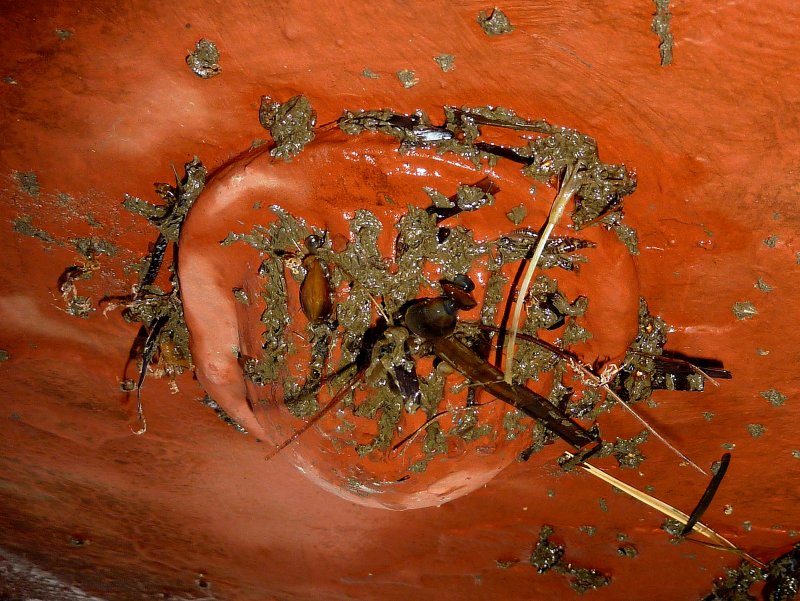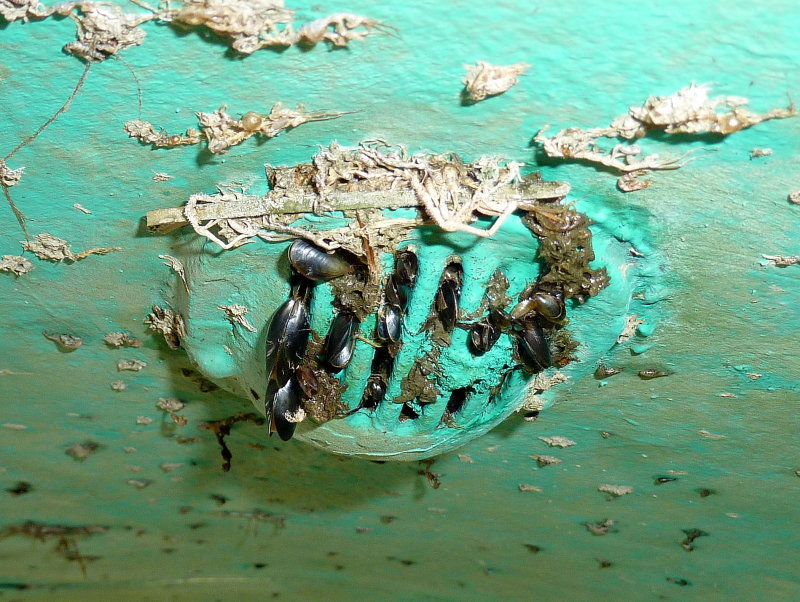mattkling- You asked about cleaning and/or replacing the external slotted thru-hull. Below is a picture of one of mine and you can see the barnacles inside of it. Mine was a one-piece design meaning that the slotted external strainer is connected to the thru-hull threaded pipe. It all comes out as one piece.
My experience- I have three thru-hulls in my boat that suck in water for the engine, genset, and A/C. All of them have big Groco strainers on the inside and for years these would occasionally plug with seaweed and an occasional jellyfish. I have burned up my share of impellers over the years due to these plugs. The two intakes that supply my engine and genset had no external strainers and the slotted strainer was only on my A/C inlet. The two engine strainers were in a really bad location and a PITA to check. Additionally the slotted thru-hull was very hard to clean-out and I could not get any anti-fouling up into the thru-hull to discourage the growth.
A couple of years ago I changed the A/C slotted one-piece thru-hull to a standard one. Over all three thru-hulls I installed external strainers with a hinged cover. These are made by Groco. The advantage is that with holes instead of slots it is much harder to get seaweed to enter and travel to the Groco basket strainer inside. Since installing these external hinged-cover strainers, I have not gotten more than 2-3 pieces of seaweed into my basket strainers in an entire season. The result is no plugs, no decrease in water flow, and no impeller failures from lack of water. With the smooth surface of the holed-cover, I also have not picked up any plastic bags, jelly fish, or any other floating debris.
I realize that Maine Sail does not like external strainers and I respect his position, but they work for me. In the Spring I open the covers and clean anything that is inside. Since I can paint anti-fouling inside, I rarely have anything to clean. The main point is that they are actually cleanable.
JoeWhite and RickD- I think the additional strainer to catch impeller pieces is a swell idea! Maybe it is un-necessary if you can easily pull the HX cover off, but in my case accessing the HX cover is very difficult. I actually have an impeller fail with broken pieces every couple of years, so I my case it is relatively common. I will admit that maybe changing the impeller every year as Maine Sail advocates could likely eliminate those failures. Currently I change impellers by number of hours run. I have seen impeller failures at the 300-350 hour range so I change at 250 hours. Regardless, maybe it is still a better idea to just change annually.









